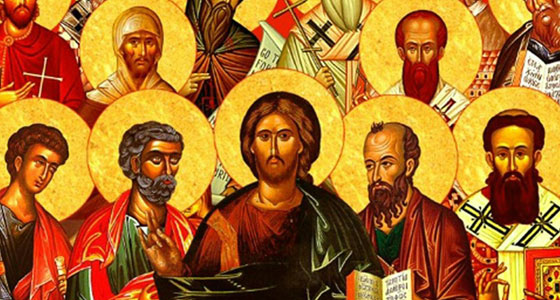Apologetics in the Early Church
As the Christian faith spread, its members encountered new challenges, and the early Church began to develop an extensive apologetic literature, directed both externally—to non-Christians—and internally—to deal with apologetic issues among those professing to be Christian.
Early Apologists and their Critics: Beginning in the second century, a group of Christian authors known specifically as “apologists” began to appear. They also had critics.
- One of the most prominent second century apologists was St. Justin Martyr, a Samaritan who travelled to Rome and wrote a number of surviving works directed to highly influential non-Christians, such as the emperors and the members of the Roman Senate.
- Another was St. Irenaeus of Lyons, who wrote a five-volume work known as Against Heresies. It used apologetics to combat erroneous ideas in the Christian community.
- An early critic of the Christian movement was the philosopher Celsus, who wrote an anti-Christian work titled On the True Doctrine. Though lost, it is substantially preserved in the response Against Celsus, which was written by Origen of Alexandria.
External Apologetics: Early apologists needed to practice “external” apologetics—that is to deal with people who weren’t members of the Christian community (non-Christian Jews and pagans).
- One of the apologists’ key goals was conversion—encouraging people to become Christian.
- Another major goal was achieving tolerance for the Christian faith, which had begun to be persecuted by the state during the time of the emperor Nero.
- Early apologists had to refute rumors based on misunderstandings of Christian practices. The Christian emphasis on love led to a rumor that Christians practiced sexual immorality in the form of free love. The Christian belief in the Real Presence of Christ in the Eucharist led to rumors that Christians practiced cannibalism and drank the blood of infants.
Internal Apologetics: Apologists also needed to practice “internal” apologetics to combat heresies that were spreading among those who professed to be Christian.
- Ebionites believed that Jesus was a purely human Messiah and denied that he was God.
- Docetists believed that Jesus was God but denied that he was also man. They claimed he only “seemed” to be human (Greek, dokeô, “I seem”).
- Like many later heretics, the Ebionites and Docetists refused to hold two truths in conjunction with each other (i.e., that Jesus is both God and man) and accepted one at the expense of the other.
- Marcionites, the followers of Marcion of Sinope, thought that the Old Testament and the New Testament fundamentally contradicted each other. They therefore believed in two gods—the inferior Jewish god who made the world and the Christian God who sent Jesus. Marcion produced a mutilated edition of the New Testament with the Jewish parts cut out. This helped spur the Church to distinguish more clearly between the authentic Scriptures and the new, false ones being written.
- Gnostics claimed to have special, revealed knowledge (Greek, gnosis) of God. There were many kinds of Gnostics, but they generally held that the true God was remote and unknowable. He then emanated a series of lesser deities, one of whom made the world. Gnostics believed that they contained a spark of the divine and could be freed from this world by realizing their true nature.
Gnostics did not simplistically claim that one is “saved through knowledge.” Everyone who believes in salvation believes that there is someone one need to do—and thus something one needs to know—to achieve salvation. Gnostics believed that they could be saved through their special kind of revealed knowledge, which told them they had a spark of the divine.
Did you enjoy this short lesson? It's a great sample of what you'll learn in the School of Apologetics Course, Beginning Apologetics, taught by Jimmy Akin. Visit Schoolofapologetics.com today for more information.
Recent Posts
-
God Creates Out of Love
God creates, we believe, ex caritate—out of love. If we recall our image of Christianity as a refle …Dec 16th 2025 -
If We Just Love Jesus, Does It Really Matter Which Church We Go To?
When I was considering joining the Catholic Church, I sat down with some of my non-Catholic friends …Dec 12th 2025 -
How Can I Prepare Myself to Receive Holy Communion at Mass More Fruitfully?
Preparation for the celebration of the holy Mass and reception of Holy Communion is an essential el …Dec 8th 2025










